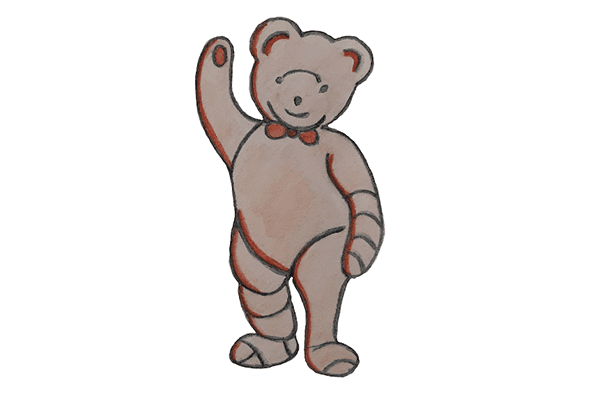I was nine when I was burnt. One moment, I was breathing in steam from a mixing bowl of freshly boiled water to chase away a cough. The next, I was screaming as boiling water dripped down my legs.
I remember the pain the most. The cheap polyester pyjama shorts covered in bright pink and red cherries had melted and fused to my skin; blisters bubbled across my lap. I remember the drive to the hospital; tears streaming down my cheeks while the hospital speedbumps left me shaking in pain. My parents met us at the hospital. Dad was stony faced. Mum refused to let go of my hand the entire night. My thighs were unrecognisable. I had red, angry scalding from my knees to my navel. My lap was a mess of second and three degree burns where the skin had been completely burned away.
I spent several weeks in a hospital bed in Westmead Children’s Hospital. I spent months in a wheelchair. I spent well over a year returning to that bandaged bear unit to have my bandages redressed and checked signs of infection. I cried during my first shower after what felt like an eternity of sponge baths and hair washes in the sink. I wore silicon patches for three years after that accident and couldn’t wear shorts for longer.
But as physical wounds turned to scars, the mental trauma of what occurred only started to sink in. Post-Traumatic Stress Disorder made sleeping almost impossible. Calming essential oil blends and classical music prescribed by a therapist did little to stop the images that flashed behind closed eyelids. Those cherry shorts, the whiteness of skin burnt away, shivering in a tub of cold water while my babysitter called triple zero. Even after a decade, citrus cleaning products make me tremble and feel nauseous; they send me back countless trips spent having bandage glue wiped off with orange De-Solv-It.
Still, I was lucky. I didn’t need extensive skin grafts, nor did I face the horrors of infection. My scars did not disfigure my face or hands or arms, Instead they faded, and became relatively smaller as I grew legs no longer belonging to a nine year old.
But when the words “burns survivor” are spoken, one imagines obvious scars mutilating large expanses of skin. Indeed, that is what I pictured for a very long time. Which is perhaps why I look down at my relatively small patches of white scarred skin, barely discernible under criss-crossing stretch-marks, and struggle to acknowledge what I am. How could I be a “burns survivor” when there are people who had it so much worse than me?
This idea became my mantra for a long time. I would throw away invites to burns survivor’s camps because I wasn’t a “burns survivor.” I felt I did not meet the minimum requirements to deserve the title and the pity “survivor” evoked. I mistook downplaying the trauma as recovery; dismissing triggers as hysteria or sleep deprived emotionality. Smells and images that would make me feel like sobbing saw me hastily making an exit whilst hiding trembling hands and the crack in my voice. My PTSD evolved to general anxiety and a compulsive need to perfectly prepare for every possible outcome. “Go with the flow” became lost from my vocabulary, stemming from a hyperawareness of how bad a worst-case-scenario can be. It became the norm for friends to tease me about being paranoid or high strung, whilst I smiled, shrugged and triple checked google maps.
But the reality is that it’s hard to explain the trauma that has made a home inside of you whilst you constantly dismiss it. It’s hard to call yourself a burns survivor when you are waiting for the response, “you don’t look like a burns survivor” or “hot water? That doesn’t hurt like fire though, does it?” That constant fear of someone dismissing your experience leads you to do it first. Eleven years on, I am still learning that there is not a threshold for recognising your own trauma; the experiences of others simply do not discredit your own.





